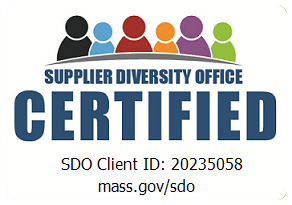Written by Claytoya Tugwell
It started with snacks.
Once, during a leadership retreat with a nonprofit client, someone suggested adding “happiness” to the staff engagement survey. A senior leader scoffed:
“We’re not trying to run Disneyland here. People are here to work, not to be happy.”
Everyone laughed. The conversation moved on. But the moment stuck with us.
Because beneath the joke was a real, lingering belief: that happiness at work is indulgent. Optional. Maybe even unprofessional.
But here’s what the science says: it’s not optional. It’s strategic.
Happiness ≠ Perks
We’ve come to associate happiness at work with surface-level benefits—snacks, flexible hours, summer Fridays. These perks are pleasant, but they’re not what makes people thrive.
True workplace well-being isn’t about providing perks—it’s about fostering the conditions where people feel psychologically safe, engaged, and connected.
What the research tells us—and what we’ve witnessed firsthand—is that real happiness at work is built on clarity, agency, and relationship. It’s knowing why your work matters. It’s being challenged in ways that energize, not deplete. It’s having people who notice when you’re at your best—and care when you’re not.
Psychologist Martin Seligman’s PERMA model offers a practical framework for well-being:
- Positive Emotion: Experiencing joy, gratitude, and optimism
- Engagement: Feeling absorbed, present, and energized by your work
- Relationships: Building trust, connection, and belonging
- Meaning: Connecting your work to something bigger than yourself
- Accomplishment: Making progress and feeling proud of it
When these elements are present, people don’t just feel better—they perform better. And the good news? Most of these changes are cultural, not costly.
Positive Emotion
In many workplaces, emotions are treated like background noise: tolerated when positive, avoided when not. But positive emotion isn’t about being cheerful all the time. It’s about creating enough moments of joy, gratitude, and connection that people have the energy to keep going—especially when the work is hard.
We worked with a team that began each weekly meeting with a check-in: “What made you smile this week?” At first, it felt like small talk. But over time, the tone shifted. People brought their full selves into the room. Celebrations surfaced. So did support.
These micro-moments of levity and appreciation created an emotional buffer—one that helped the team navigate difficult decisions and stressful projects with more ease.
Positive emotion isn’t a distraction from serious work. It’s what makes serious work sustainable. When organizations reinforce joy, gratitude, hope, pride, awe and other positive emotions, people stay open, resilient, and connected.
Engagement
Feeling good is one thing—but people generally want to feel immersed in what they do. That’s what engagement is about—not compliance, but curiosity. Not just effort, but flow.
We worked with a program coordinator who was nearing burnout—not from overwork, but from under-stimulation. Her goals were vague, her talents underused. Her manager met with her and restructured her role using our STARS framework: Strengths-based, Trackable, Aligned, Resonant, and Stretching.
The impact? The change was dramatic.Her motivation returned. Her creativity reemerged. Within a few months, she wasn’t just meeting expectations—she was redefining them.
Engagement thrives when people feel challenged and competent. It’s not about more tasks. It’s about the right ones.
Relationships
As humans, we are wired for connection. And yet, in too many workplaces, social ties are left to chance. Relationships are treated as nice-to-have extras—nice if they happen, but not core to how we work.
At one organization, remote work during the pandemic had left people feeling isolated. Meetings were efficient, but connection was fading. So leadership tried something simple: they paired employees at random for monthly virtual coffees. No agenda. No deliverables. Just space to be human.
What followed wasn’t flashy—but it was powerful. Colleagues became collaborators. Conversations deepened. People felt seen again.
Relationships don’t just make work more enjoyable. They make teams more resilient and adaptable—especially in moments of change.
Meaning
We often assume meaning is baked into mission-driven work—but that’s not always the case. When pressure builds and tasks pile up, people can lose the thread.
That’s why reflection matters. Simple prompts like:
- “What impact are you proud of this month?”
- “Who are we doing this for?”
- “What part of your work feels personal to you?”
Meaning doesn’t shout. It whispers. And when we pause long enough to listen, it brings people back to center.
Accomplishment
In high-performing teams, what often gets overlooked is one of the most basic human needs: the sense that progress is happening—and that it matters.
One nonprofit leader we worked with noticed her team was checking off tasks but feeling deflated. Nothing felt like enough. So she began closing team meetings with a ritual: every person named one thing they were proud of.
At first, the end of team meetings were quiet. Then it caught on. People started naming their own growth—how they handled a hard conversation, supported a colleague, or simply showed up with more confidence than the week before.
Progress, when named, becomes fuel. Accomplishment isn’t about massive wins. Accomplishment isn’t about massive wins. It’s about building momentum and confidence one small success at a time.
The Bottom Line
Workplace happiness has been misunderstood for too long. It’s not about forced fun or chasing euphoria. It’s about building a culture where people feel grounded, challenged, supported, and seen.
When organizations intentionally support positive emotion, engagement, relationships, meaning, and accomplishment, people don’t just stay. They thrive. They take initiative. They bring others along.
Because when people are thriving, the work doesn’t just get done. It gets better.
So no—we’re not trying to run Disneyland.
We’re building teams that last.
And it starts with well-being.










